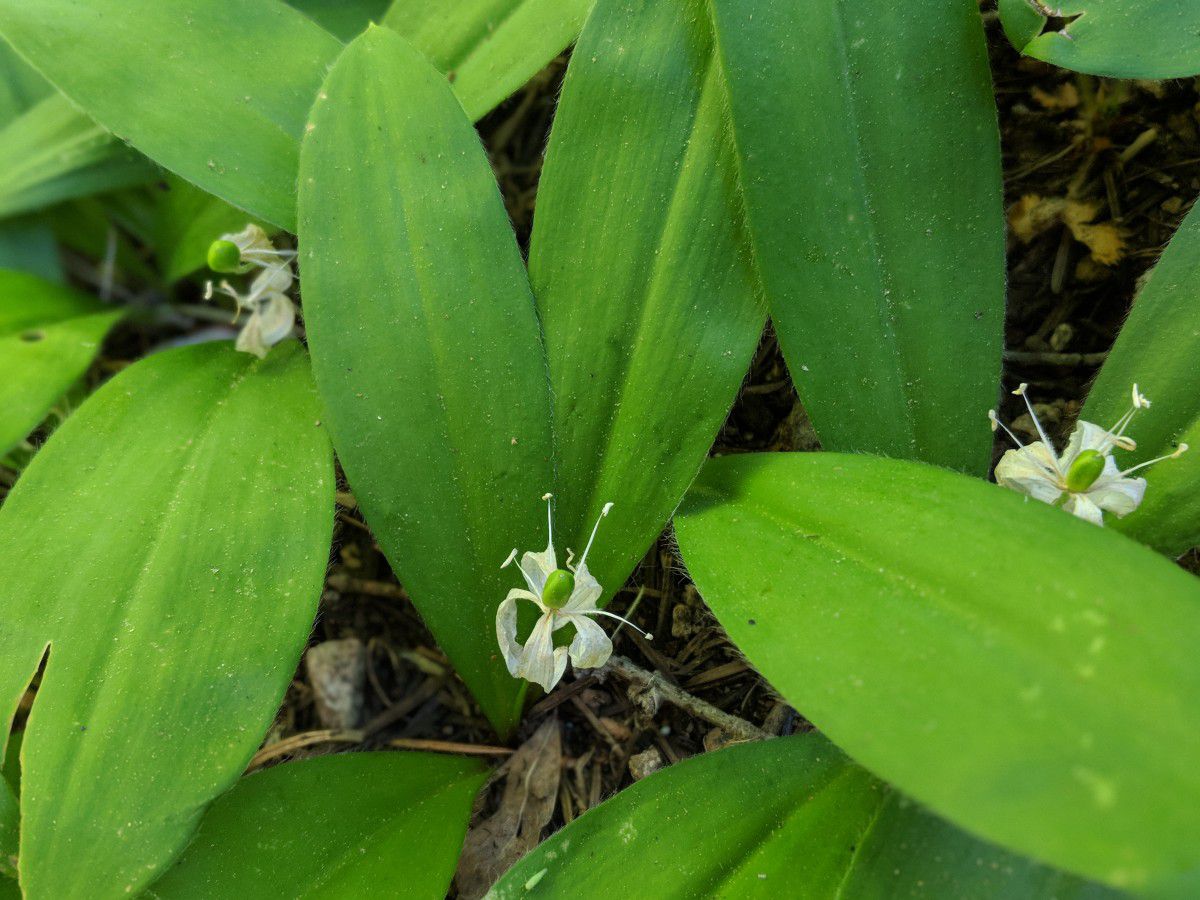Taxonomy: Kingdom - Plantae (plants). Subkingdom - Tracheobionta (vascular plants). Superdivision - Spermatophyta (seed plants). Division - Magnoliophyta (Flowering plants). Class - Liliopsida. Order - Liliales. Family - Liliaceae (lily family). Genus - Clintonia Raf. Species - Clintonia uniflora (Menzies ec. Schult. f.) Kunth.
Ecology: Bride's bonnet occurs in many coniferous forests types. It is an indicator in moist or cool forests such as western redcedar (Thuja plicata), western hemlock (Tsuga heterophylla), grand fir (Abies grandis), subalpine fir (Abies lasiocarpa), and Pacific silver fir (Abies amabilis). In addition to these species, bride's bonnet is associated with western white pine (Pinus monticola), Alaska-cedar (Chamaecyparis nootkatensis), and noble fir (Abies procera). It also inhabits riparian zones. Bride's bonnet occurs to a lesser extent in drier forest types such as Douglas-fir (Pseudotsuga menziesii) and lodgepole pine (Pinus contorta). It has even been reported in mature ponderosa pine (Pinus ponderosa) stands. Understory species associates include threeleaf foamflower (Tiarella trifoliata), twinflower (Linnaea borealis), and bunchberry dogwood (Cornus canadensis).



